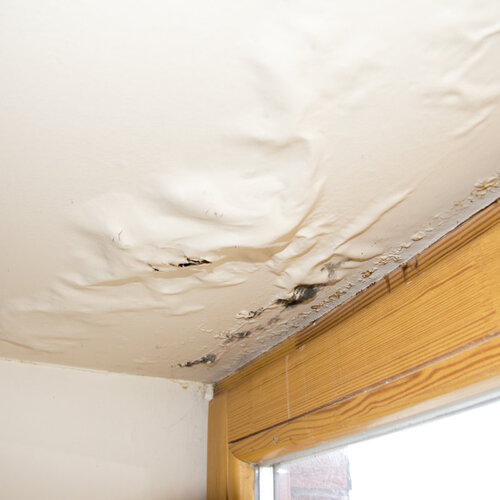Every person is bound to have their own rationale involving How to detect water leaks in your home.

Leakages not only trigger waste of water but can likewise trigger unnecessary damages to your residence and advertise undesirable organic growth. Unfortunately, water leakages might go unnoticed since a lot of the pipework in our house is concealed. By looking and also understanding for everyday scenarios that cause leaks, you can secure your house from future leakages and also unnecessary damage. Today, we will certainly check out 6 leak causes that might be causing your pipes to leak.
Intruding roots
The majority of water leakages begin outside the house as opposed to inside it. If you discover an abrupt decrease in water stress, state in your tap, take some time to go out and analyze your backyard. You may observe wet spots or sinkholes in your lawn, which could mean that tree roots are invading water lines causing water to leak out. You can have your plumber check for invasion, particularly if you have trees or shrubs near your property.
Rusty water systems
As time goes by, your plumbing system ages as well as corrosion such as rust might start eating away the pipes. This might be the source of discoloration or bending on your water pipes. This requires an assessment with your plumber instantly. Think about changing the pipelines considering that they are at a greater risk of deterioration than the newer models if our plumbing system is old.
Faulty Pipeline Joints
The factor at which your pipelines attach is often the weakest web link in the waterline. Pipeline joints can weaken over time, leading to water leakages. However, the majority of pipeline joints are not conveniently visible. If you have loud pipelines that make ticking or banging noises, specifically when the hot water is turned on, your pipeline joints are most likely under a lot of pressure. It is a good idea to have your plumber inspect your system annually.
Instantaneous temperature adjustments.
Extreme temperature level modifications in our pipes can create them to increase as well as get suddenly. This expansion as well as contraction might create splits in the pipelines, particularly if the temperature are below freezing. It would be best if you kept an eye on exactly how your plumbing functions. The presence of the previously mentioned situations regularly suggests a high threat.
Poor Water Connectors
At times, a leak can be triggered by loose tubes and pipes that provide your appliances. In instance of a water connections leakage, you may discover water running directly from the supply line or puddles around your devices.
Clogged Drains
Obstructed drains pipes could be frustrating and inconveniencing, yet they can in some cases end up causing an overflow bring about burst pipes. Maintain getting rid of any products that might go down your drains that can block them to avoid such aggravations.
All the above are reasons for leaks however not all water leaks arise from plumbing leaks; some leaks might originate from roof leakages. All leaks need to be repaired instantly to stay clear of water damage.
Leaks not just trigger waste of water but can also cause unnecessary damage to your house and also promote unwanted organic development. By understanding as well as looking for daily circumstances that trigger leaks, you can shield your home from future leakages as well as unneeded damages. Today, we will certainly look at six leakage triggers that might be creating your pipelines to leak.
At times, a leak can be caused by loose tubes as well as pipelines that provide your devices. In case of a water links leak, you might observe water running directly from the supply line or pools around your home appliances.
How To Check For Water Leak In Your Home
How To Check for Leaks
The average household's leaks can account for nearly 10,000 gallons of water wasted every year and ten percent of homes have leaks that waste 90 gallons or more per day. Common types of leaks found in the home are worn toilet flappers, dripping faucets, and other leaking valves. These types of leaks are often easy to fix, requiring only a few tools and hardware that can pay for themselves in water savings. Fixing easily corrected household water leaks can save homeowners about 10 percent on their water bills.
To check for leaks in your home, you first need to determine whether you're wasting water and then identify the source of the leak. Here are some tips for finding leaks:
Take a look at your water usage during a colder month, such as January or February. If a family of four exceeds 12,000 gallons per month, there are serious leaks.
Check your water meter before and after a two-hour period when no water is being used. If the meter changes at all, you probably have a leak.
Identify toilet leaks by placing a drop of food coloring in the toilet tank. If any color shows up in the bowl after 10 minutes, you have a leak. (Be sure to flush immediately after the experiment to avoid staining the tank.)
Examine faucet gaskets and pipe fittings for any water on the outside of the pipe to check for surface leaks.
Undetected water leaks can happen without the home or business owner even realizing. If you suspect a water leak, but not able to find the source. It is time to contact a professional water leak detection service, The Leak Doctor.
How To Find a Water Leak In Your Home
https://www.leakdoctor.com/blog/How-To-Check-For-Water-Leak-In-Your-Home_AE197.html

As a passionate reader on Most Common Causes of Leaky Pipes, I was thinking sharing that excerpt was really useful. Don't hesitate to set aside a second to promote this write-up if you enjoyed it. Thanks a lot for going through it.
This Website
Comments on “Reveal the Most Frequent Origins of Leak Problems Within Your Home”